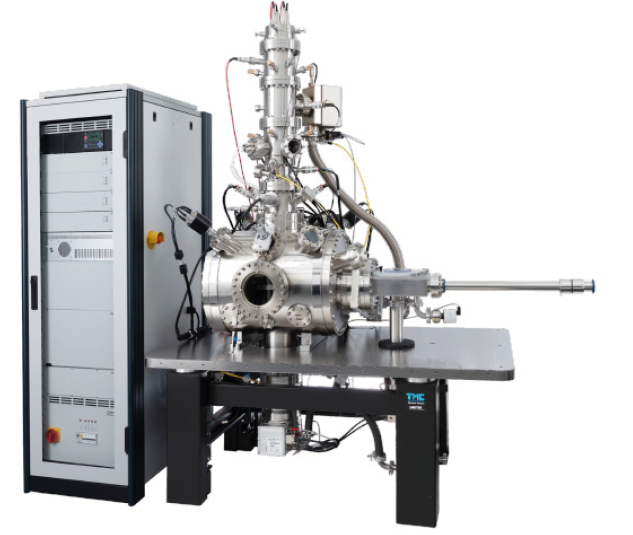This website uses cookies so that we can provide you with the best user experience possible. Cookie information is stored in your browser and performs functions such as recognising you when you return to our website and helping our team to understand which sections of the website you find most interesting and useful.

Doping Materials and Device Fabrication
Technology Platform
About
At the heart of the doping materials and device fabrication technology platform sits the innovative tool, the Platform for Nanoscale Advanced Materials Engineering (PNAME). PNAME is a novel co-beam tool utilising the implantation capabilities of a liquid metal ion source (LMIG) and the positioning accuracy of an SEM. A range of LMIG sources have been developed in collaboration with the NAME programme grant that gives us access to a wide range of ions of interest with a diverse range of applications including spintronics and quantum information devices. Our current selection of ions of interest include Bi, Sb, Au, Er, Ge, Cu, Nd, Mn, Sn, Si, In and Co.
The tool’s ion mass separating Wien filter enables the emission from these sources to be filtered and for implantation of single isotopes of the desired ion. The ability to switch between various ions and isotopes allows for more complex, multistep implantations to be realised.
The beam of these ions is then condensed and focused with resolution of sub-20nm and currents of up to 10nA. The system can be run in two modes: localised area implantation or deterministic implantation.


For localised area implantation doses as high as 1E19/cm2 can be achieved, and when combined with the SEM capabilities, the implantation of pre-existing device architecture ie nanowire devices or implantation on randomly distributed nanostructures (quantum dots) can be accomplished.

Single-ion implantation is available with deterministic implantation utilising high-gain electron detectors. These can be positioned into arrays, where the resolution is determined by the spot size of the beam itself. Key to utilisation of the various modes is the expertise of using? the tool, which has been developed over the years to provide hands-on knowledge of beam dynamics and experiment design.
Additional features of the chamber also include the capabilities for in-situ electrical measurements and vacuum suitcase compatibility. Alongside PNAME within the platform, there is also rapid thermal annealing (RTA) capabilities to aid recrystallisation post-implantation under a variety of atmospheres including argon and nitrogen.
PNAME sits within the NAME programme grant that supports multiple postgraduate research projects across the UoM and beyond, including PhD students. Our objective is to provide new world-leading capabilities and realise designer materials for quantum technologies and in so doing, shape the UK and international advanced functional materials landscape.

